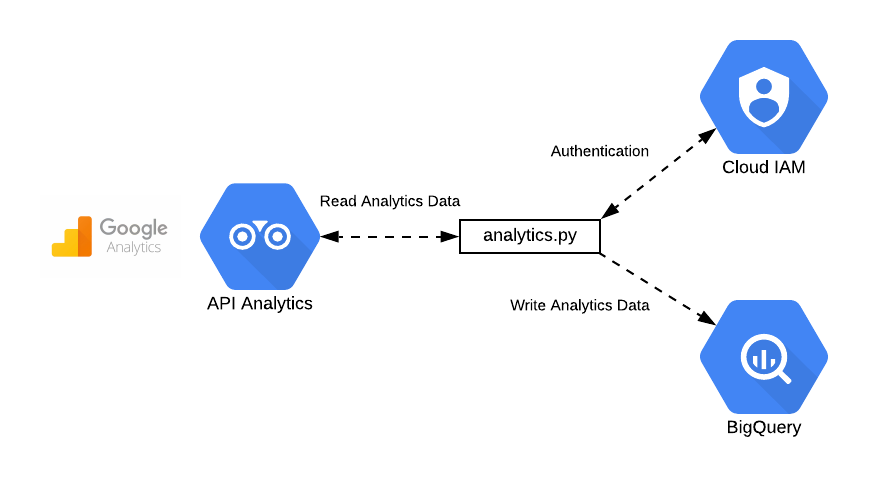
DevOps is not a buzz anymore - it is the core of agile software development, automation, and the scalable delivery of software. However, even in widespread adoption cases, most businesses encounter serious issues with: fragmentation of toolchains, inconsistency in deployments, lack of visibility across environments and slowness in recovering in case of failures. Choose MCP (Managed Cloud Platform), which focuses on the management and optimization of all matters of the DevOps pipeline.
This guide will demystify what makes MCP a next-gen accelerator to your DevOps process and help answer the question of why it is the perfect add-on to any software lifecycle.
What is MCP?
MCP, also known as Managed Cloud Platform, is an integrated cloud control space to make things simple and help develop and apply enhanced governance and faster apps. You can imagine it as a control tower, which brings together compute, storage, network, CI/CD, observability, security, and compliance into a single intelligent interface.
As opposed to a single DevOps tool or automation script, MCP presents an entire stack of management functions, providing developers, DevOps teams, IT admins with a common interface to build, deploy, monitor and scale applications with the least friction.
Why DevOps Needs More Than Just Tools?
Before MCP, DevOps workflows relied heavily on a scattered toolkit — Jenkins for CI, Terraform for IaC, Ansible for provisioning, Prometheus for monitoring, and dozens more. While each tool solves specific problems, they don't naturally talk to each other. You end up with disconnected islands of automation. The DevOps Market size was valued at USD 10.4 billion in 2023 and is expected to grow at a CAGR of 19.7% from 2023 to 2028.
This patchwork causes:
- Inconsistent workflows between dev, test, and prod.
- Silos between development, operations, and security teams.
- Lack of visibility into application performance or deployment health.
- Difficulty enforcing compliance or auditing changes.
- Long recovery times from outages or failed releases.
MCP solves these issues by becoming the connective tissue. It brings order to the chaos by offering centralized orchestration, governance, observability, and security policies — all baked into your DevOps pipeline.
Core Components of MCP and How They Enhance DevOps?
In order to understand the differences that MCP can make to your working process in the depth, we should divide its components and functions and see how they can influence the routine work of a DevOps team.
1. Integrated CI/CD Pipelines
Among the most significant benefits of MCP, one can name its compatibility with CI/CD workflows. Regardless of whether you operate with GitHub Actions, GitLab CI or Jenkins, MCP has integrated connector that can be used to trigger builds, tests, and deployments.
It automates:
- Code pull, merge validation, and static analysis
- Container builds with security scanning
- Deployment approvals and rollbacks
- Canary and blue/green deployments
- Audit trails for all changes
By embedding CI/CD into the platform itself, you remove the overhead of configuring separate systems and worrying about inconsistent pipeline behavior across teams.
2. Unified Infrastructure as Code (IaC)
MCP also standardizes the infrastructure provisioning powered by the IaC templates, regardless of whether you are using Terraform, AWS CloudFormation, or Azure Bicep.
Version control, logging, and connection with your CI/CD scripts are applied to all IaC executions. This will allow you to:
- Launch identical environments across dev, staging, and prod
- Control drift by validating state regularly
- Use policy-as-code to enforce security (e.g., no open security groups)
- Minimize human error through automation
With IaC deeply embedded into the platform, infrastructure becomes part of your application lifecycle rather than a separate concern.
3. Kubernetes and Container Management
MCP is usually planned to work with Kubernetes (K8s). It generalizes the details of operating the cluster, pods, ingres controllers and storage volumes.
Instead of manually configuring Helm charts or YAML manifests, MCP offers:
- Visual interfaces to deploy and scale microservices
- Auto-healing and rolling updates of pods
- RBAC (Role-Based Access Control) integration for access governance
- Monitoring dashboards with Prometheus/Grafana
- Service mesh integration (like Istio or Linkerd) for observability and control
By removing the learning curve of K8s management, MCP empowers development teams to self-serve without compromising platform consistency or security.
4. Built-In Observability
DevOps without observability is flying blind. MCP platforms typically include a full observability stack — logs, metrics, traces tightly coupled with your infrastructure and services.
Key capabilities include:
- Real-time alerts from Prometheus or Datadog
- Trace analysis via Jaeger or OpenTelemetry
- Centralized logging using ELK or Loki
- Performance insights tied to releases
- SLO and SLA tracking
This visibility is not just for debugging — it also feeds intelligent recommendations into your workflow, like auto-scaling policies or performance bottleneck resolution.
5. Secret Management and Security
MCP ensures that DevSecOps is a reality, not a buzzword. By integrating with secret vaults like HashiCorp Vault or AWS Secrets Manager, it centralizes credential and key management.
Security features may include:
- End-to-end encryption of secrets
- RBAC/ABAC for access control
- Image vulnerability scanning (e.g., Trivy, Clair)
- Runtime threat detection
- Compliance frameworks (SOC 2, HIPAA, GDPR) as templates
This drastically reduces the attack surface while giving security teams the tools to enforce policy without blocking development velocity.
6. Cost and Resource Optimization
MCP keeps track of usage patterns and makes intelligent suggestions to optimize cloud spend:
- Rightsizing VMs or containers
- Identifying underutilized resources
- Spot instance orchestration
- Usage-based cost reporting per team/project
DevOps teams gain not only agility but also transparency and control over resource consumption — leading to better ROI.
MCP vs. Traditional DevOps Stack
Feature | Traditional DevOps Tools | MCP Approach |
CI/CD Integration | Manual setup per tool | Native, drag-and-drop pipelines |
IaC | Scattered and manual | Centralized with version control |
Monitoring | Separate logging tools | Unified observability in-platform |
Security | Bolt-on tools | Built-in secrets and vulnerability mgmt |
Governance | Minimal enforcement | Policy-as-code with guardrails |
Cost Control | Post-mortem analysis | Real-time spend monitoring |
Developer Onboarding | Takes weeks | Self-service portals with automation |
This table underscores how MCP centralizes and simplifies DevOps workflows without sacrificing flexibility.
MCP in Action: Use Case Examples
1. Fintech Company Accelerates Feature Delivery
A mid-sized fintech company was releasing new features every two months due to compliance checks and manual infrastructure provisioning. After adopting MCP, they:
- Automated staging environments on demand
- Reduced deployment approval cycles via policy-as-code
- Integrated SAST/DAST tools into CI/CD for security validation
Result: They moved from quarterly releases to weekly rollouts without sacrificing security or compliance.
2. SaaS Provider Optimizes Cloud Costs
A growing SaaS startup used MCP’s resource visibility tools to find over-provisioned compute clusters. By leveraging spot instances and rightsizing, they cut cloud costs by 30% in just two months.
3. Healthcare App Ensures HIPAA Compliance
With strict data security rules, a healthcare app integrated secrets vaults, encrypted storage, and IAM via MCP. They now have full traceability and automated compliance reporting — saving 100+ hours each quarter in audits.
How to Implement MCP in Your DevOps Workflow
Step 1: Evaluate Your Current Stack
List out tools you're currently using for:
- Source control
- CI/CD
- IaC
- Monitoring
- Security
- Secrets
- Cloud provider(s)
This will help map what MCP needs to integrate with or replace.
Step 2: Choose the Right MCP Provider
Some of the popular MCP solutions include:
- AWS Control Tower
- Azure DevOps + Azure Arc
- Google Cloud Anthos
- VMware Tanzu
- Red Hat OpenShift
- Platform.sh
- Harness.io
- Rafay Systems
Choose based on compatibility, scalability, support, and ecosystem.
Step 3: Start with a Pilot Project
Begin with a non-critical service or greenfield project. Use MCP to manage CI/CD, infrastructure, monitoring, and secrets for that project. Measure improvements in:
- Deployment frequency
- Mean time to recovery (MTTR)
- Resource utilization
- Time spent on manual tasks
This gives a realistic benchmark for wider adoption.
Step 4: Roll Out in Phases
Avoid a "big bang" migration. Instead, move teams or services to MCP incrementally. Offer training and documentation. Ensure DevSecOps, platform engineering, and finance teams are aligned on policies and metrics.
Common Challenges and How to Overcome Them
Resistance to Change
Solution: Emphasize benefits like faster releases, lower costs, and reduced toil. Involve developers early and give them ownership in shaping the new process.
Skill Gaps
Solution: Provide training on IaC, GitOps, policy-as-code, and observability tools integrated with MCP. Encourage certifications where possible.
Vendor Lock-In Fears
Solution: Choose an MCP that supports multi-cloud or hybrid deployments. Ensure your IaC and pipeline code are portable.
Over-Engineering
Solution: Avoid boiling the ocean. Don’t try to automate everything at once. Focus on high-impact areas like CI/CD, infra provisioning, and monitoring.
Future of DevOps with MCP
With AI, MCPs will soon offer:
- Predictive auto-scaling
- Intelligent rollback triggers
- Code-level optimization suggestions
- AI-generated policy enforcement
- ChatOps integrations for faster incident resolution
The shift from toolchains to intelligent platforms will define the next generation of DevOps, more autonomous, more resilient, and more developer-friendly.
Conclusion
Amid this fast, secure, and resilient software in the world, MCP keeps people, processes, and platforms in the same line. It takes away hard work, consolidates tool chains, and provides frictionless governance.
To any company that is focused on continuous delivery, advanced infrastructure, and reliability of their platforms, MCP is not merely a tool but an equal step of DevOps itself.
When you want to scale up your releases and reduce cloud expenses by orchestrating your workflow, and when you need your engineers to work exclusively on innovation, talk with us to supercharge your DevOps workflow on a Managed Cloud Platform. Contact us or Visit us for a closer look at how VE3’s DevOps solutions can drive your organization’s success. Let’s shape the future together.








